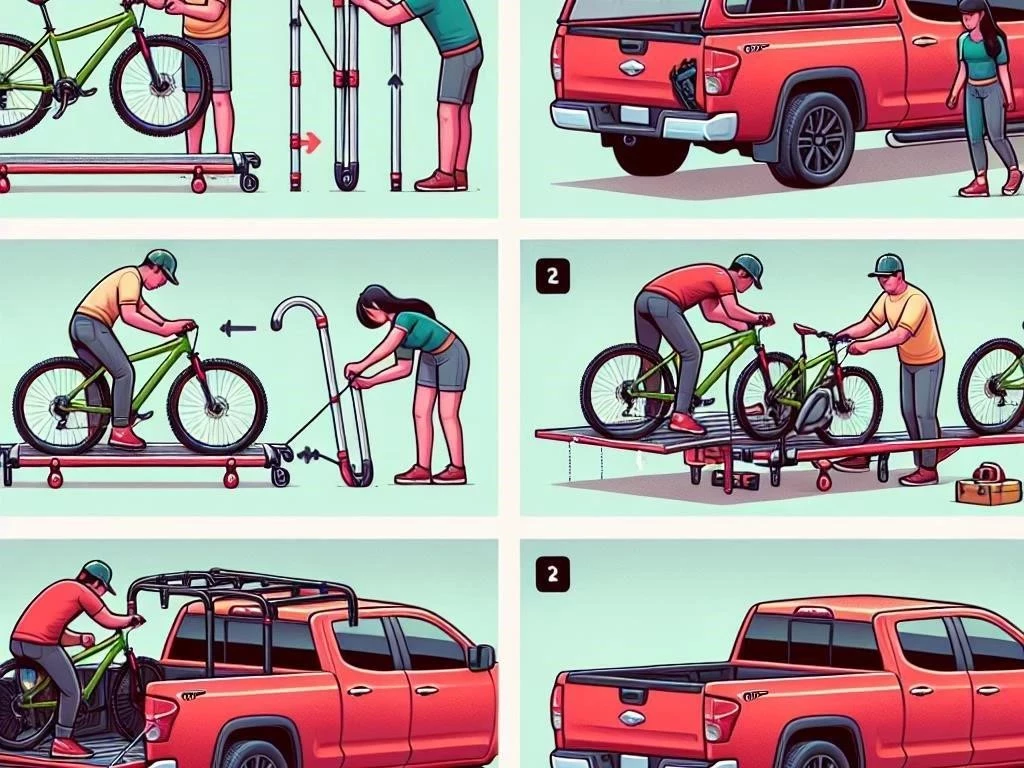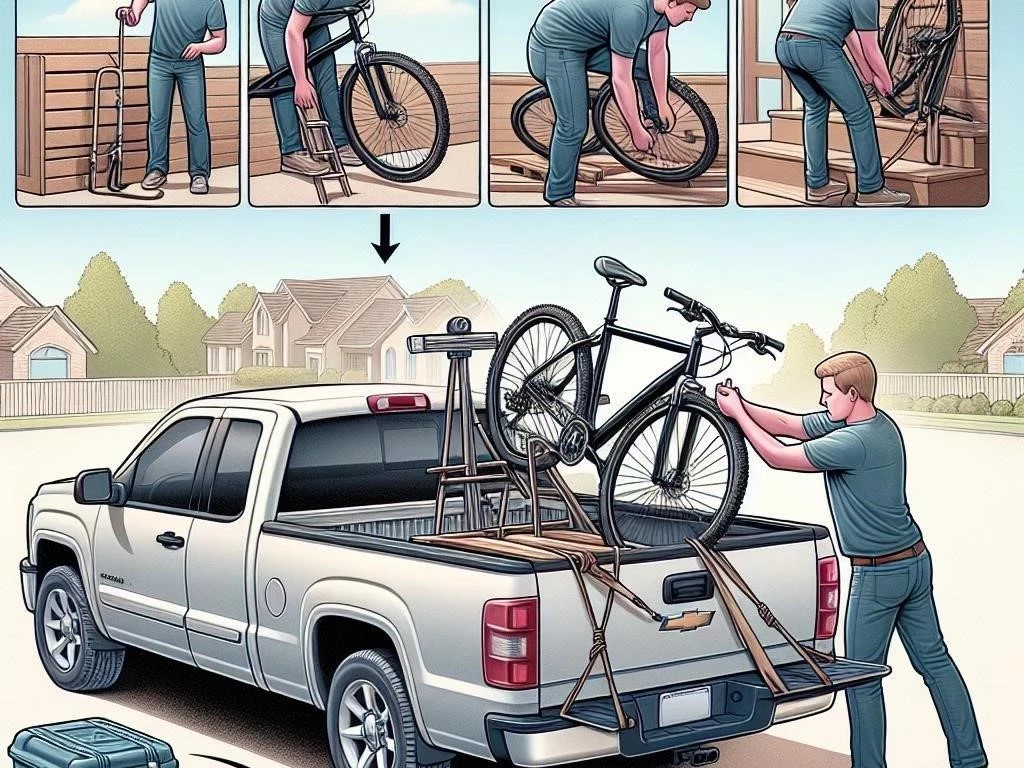
Transporting your bicycle in a truck bed requires proper planning, secure loading, and effective bike protection to ensure safe and damage-free travel during adventures.
Bicycle transport is essential for outdoor adventures, ensuring safe travel and ease of access to biking locations while maintaining your bike’s integrity and performance.
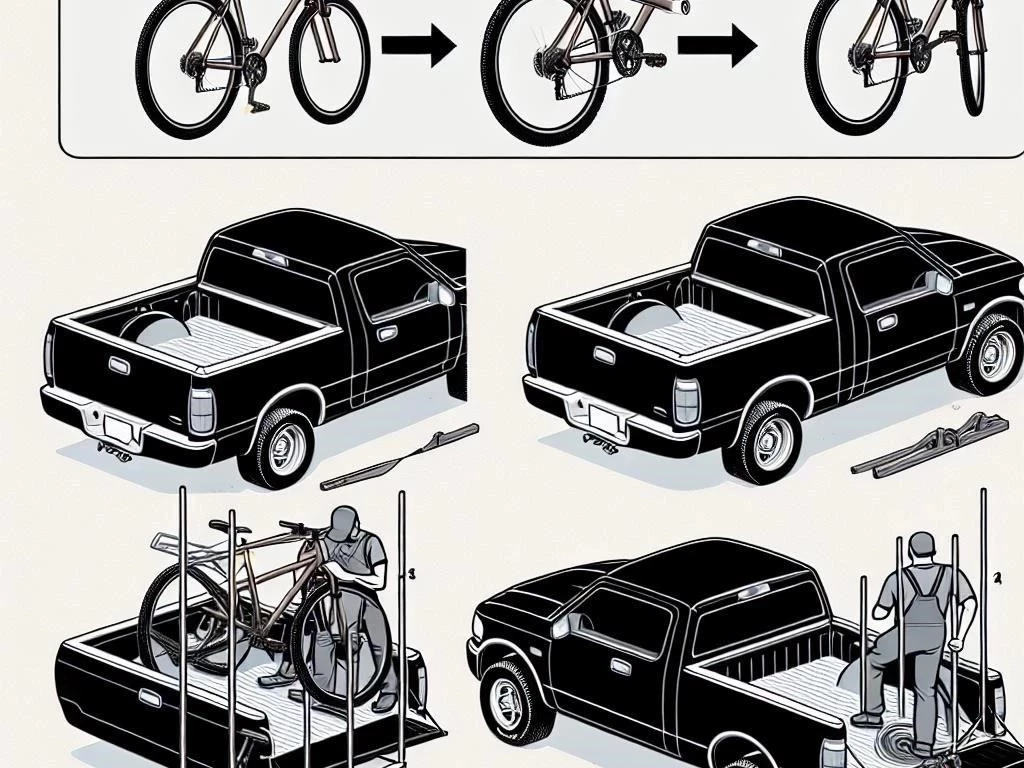
1.1 Importance of Safe Transportation
Safe transportation of bicycles is crucial for several reasons. Firstly, it ensures the protection of your bike from potential damage during transit. Proper loading and securing methods prevent scratches, dents, or breakage, preserving the bike’s performance and aesthetic appeal. Additionally, safe transport minimizes the risk of accidents on the road, preventing harm to other vehicles or cyclists. Securing your bike properly also prevents it from shifting or falling out of the truck bed, which can lead to injuries. Furthermore, maintaining bicycle safety during transport reflects responsible cycling behavior, promoting a positive image of the biking community. Overall, prioritizing safety is essential for enjoyable and worry-free cycling adventures.
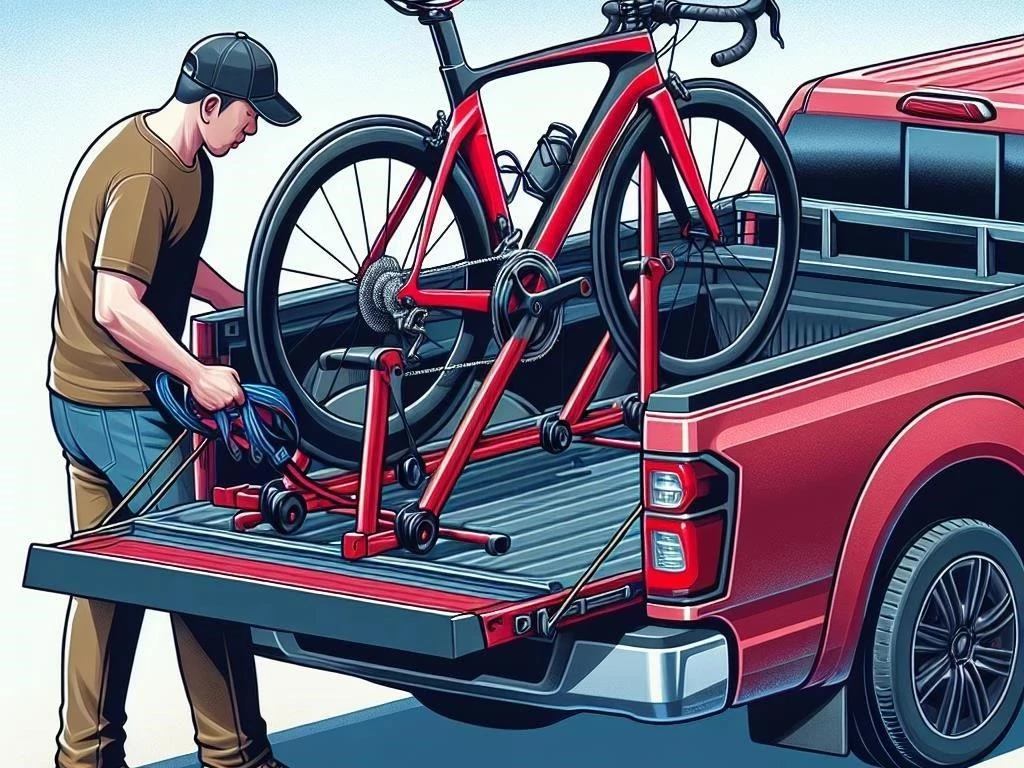
1.2 Benefits of Using a Truck for Transport
Using a truck for bicycle transport offers numerous advantages. Firstly, trucks provide ample space for multiple bicycles, making them ideal for group outings or family trips. The truck bed allows for easy loading and unloading, reducing the physical strain associated with lifting bikes onto roofs or into smaller vehicles. Additionally, trucks often have better weight distribution capabilities, ensuring that your bicycles remain stable during transit; The open design of a truck bed allows for easy access to your biking equipment and cycling gear, facilitating quick adjustments. Moreover, trucks provide a robust and secure platform, enhancing bike protection against environmental elements, making them perfect for outdoor adventures.
Preparing Your Bicycle for Truck Transport
Preparing your bicycle for truck transport involves thorough inspections, cleaning, and gathering essential cycling gear, ensuring your bike is ready for safe travel and outdoor adventures.
2.1 Inspecting Your Bicycle
Before transporting your bicycle in a truck bed, it’s essential to conduct a thorough inspection. Start by checking the frame for any visible damage or cracks that could worsen during transit. Inspect the wheels for proper inflation and ensure they spin freely without any obstructions. Examine the brakes to confirm they function correctly, as this will enhance safety upon arrival. Additionally, inspect the drivetrain, including the chain and gears, to ensure they are clean and lubricated for optimal performance. Finally, verify that all components, such as pedals and handlebars, are securely attached. This comprehensive inspection will help prevent issues during travel and provide peace of mind for your outdoor adventures.
2.2 Cleaning and Maintaining Your Bike
Cleaning and maintaining your bike before transport is crucial for its longevity and performance. Begin by using a gentle bike cleaner and a soft cloth to remove dirt and debris from the frame, wheels, and components. Pay special attention to the drivetrain, as dirt can cause wear and tear. After cleaning, inspect the chain; apply lubricant to ensure smooth shifting and prevent rust. Check the brake pads for wear and ensure they are functioning properly. Additionally, tighten any loose bolts on the handlebars, wheels, and saddle. This maintenance routine not only prepares your bike for transport but also enhances its performance during your outdoor adventures.
2;3 Gathering Necessary Cycling Gear
Gathering necessary cycling gear is vital for a successful outdoor adventure. Start by collecting essential items such as your helmet, gloves, and cycling shoes, which contribute to safety and comfort during rides. Next, include tools for bike maintenance, such as a multi-tool, tire levers, and a portable pump, ensuring you can address any issues on the go. Don’t forget to pack water bottles or hydration packs to stay hydrated while riding. Additionally, consider bringing appropriate clothing for varying weather conditions, including jackets and extra layers. Lastly, organize your gear in bags or bins for easy access during transport, making your biking experience more enjoyable and efficient.
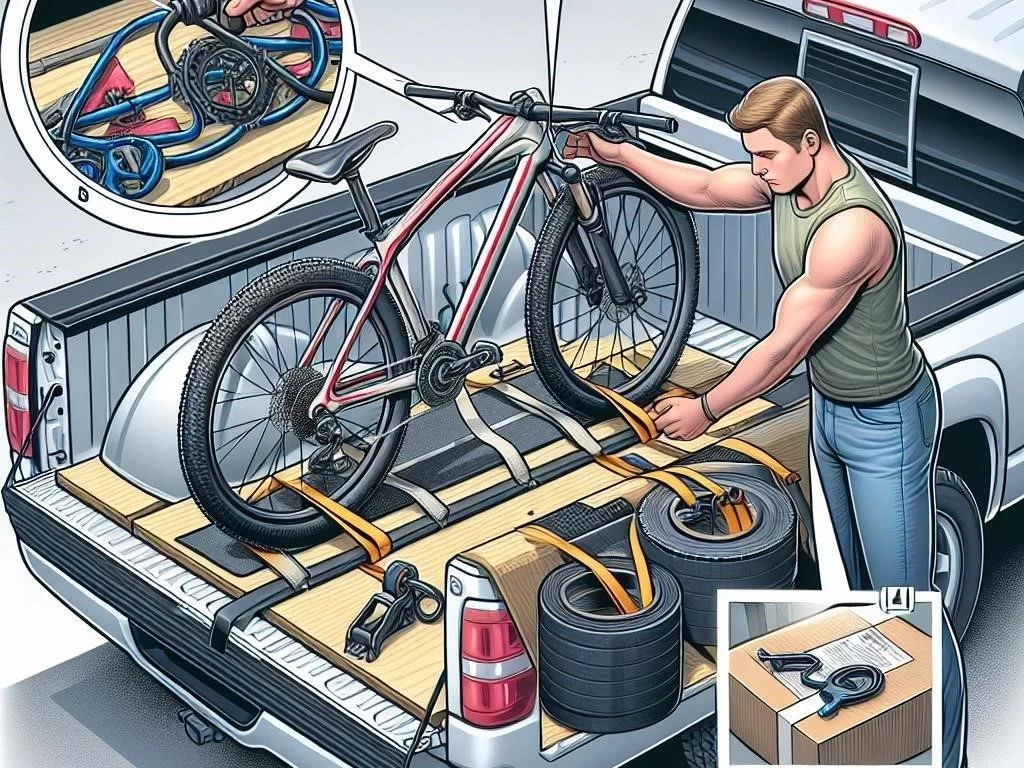
Choosing the Right Truck Accessories
Selecting appropriate truck accessories enhances bicycle transport efficiency, ensuring secure bike loading and optimal protection. Consider options like bike racks, cargo management systems, and protective covers.
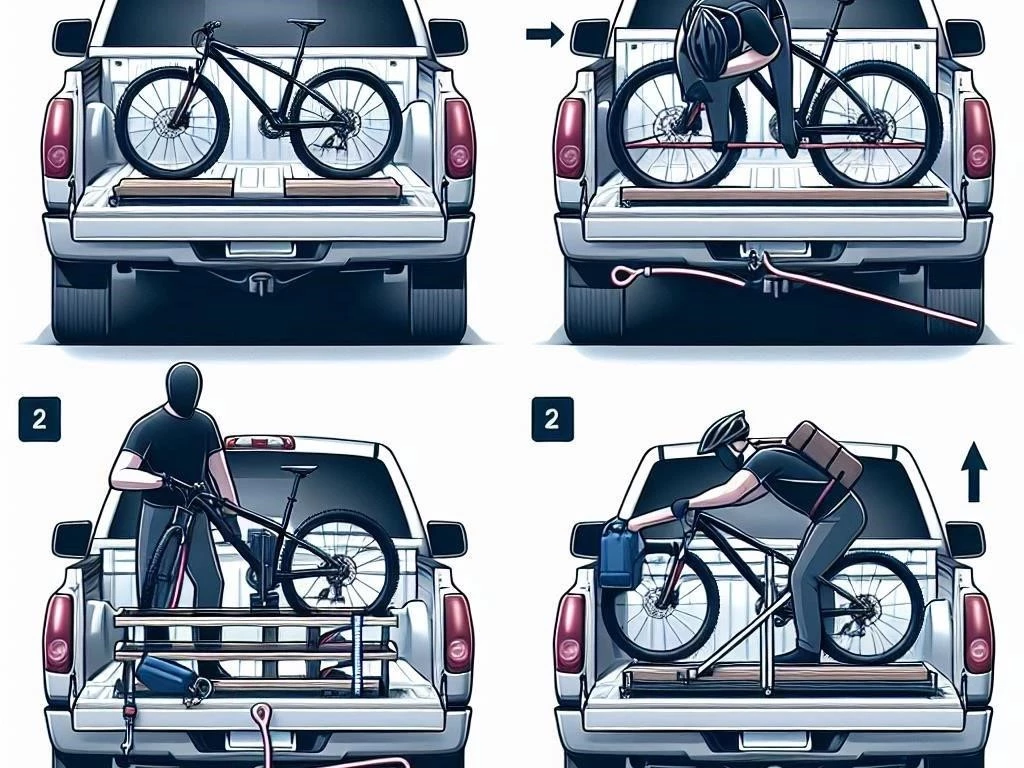
3.1 Types of Bike Racks
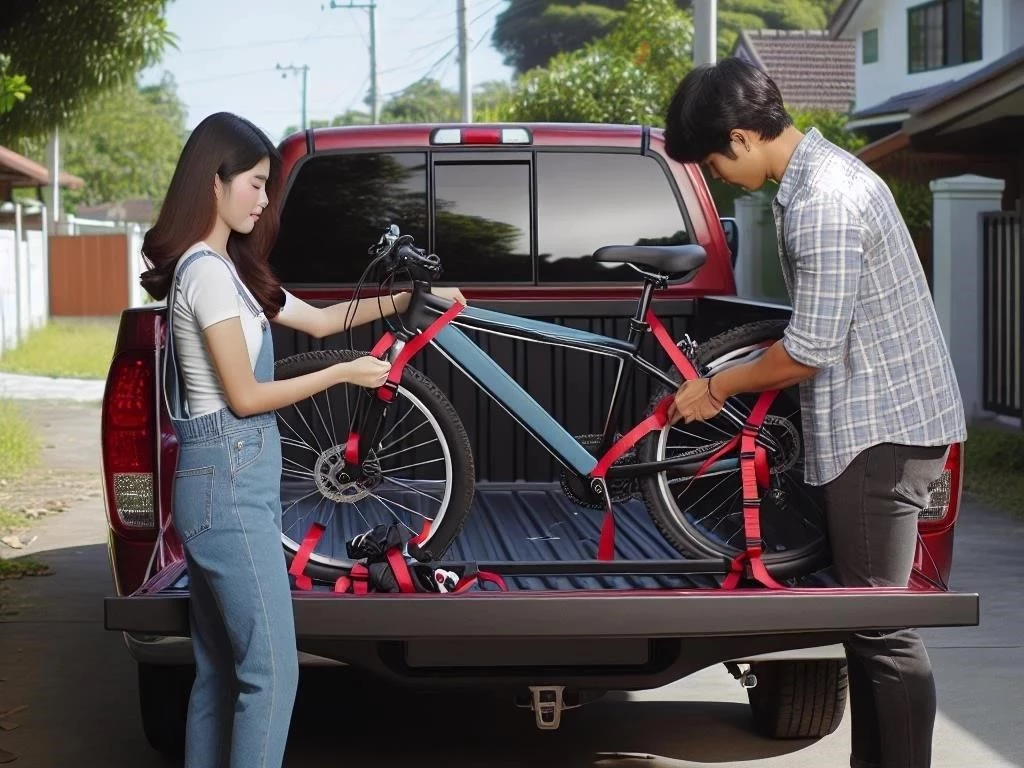
When transporting bicycles in a truck bed, selecting the right bike rack is essential for safety and convenience. There are several types of bike racks to consider. First, hitch-mounted racks are popular, providing stability and easy access to your bikes. Second, tailgate pads are designed for secure bike loading, allowing multiple bicycles to rest against the truck tailgate. Third, truck bed-mounted racks attach directly to the bed, offering enhanced security and protection. Additionally, fork-mount racks are ideal for keeping bikes upright and stable during transport. Each type has its advantages, so evaluate your needs to choose the best option for your outdoor adventures and ensure your bicycles are secure.
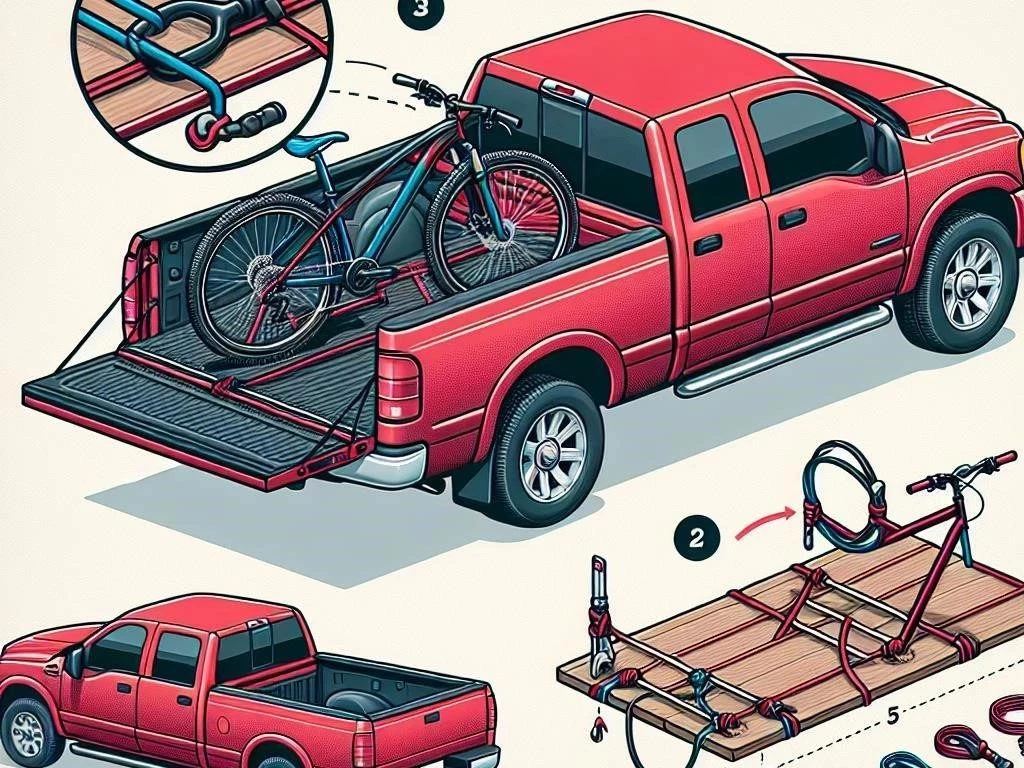
3.2 Cargo Management Solutions
Effective cargo management solutions are essential for transporting bicycles securely in a truck bed. Utilizing cargo nets can help keep your bikes stable and minimize movement during transit. Additionally, consider using tie-down straps or ratchet straps to secure the bicycles firmly in place, preventing any shifting while driving. A truck bed organizer can aid in managing your cycling gear and accessories, ensuring everything remains accessible. Furthermore, utilizing protective padding, like foam or blankets, can safeguard your bicycles from scratches or damage caused by shifting gear. Overall, investing in proper cargo management solutions enhances the safety and organization of your transport, making your outdoor adventures more enjoyable and hassle-free.
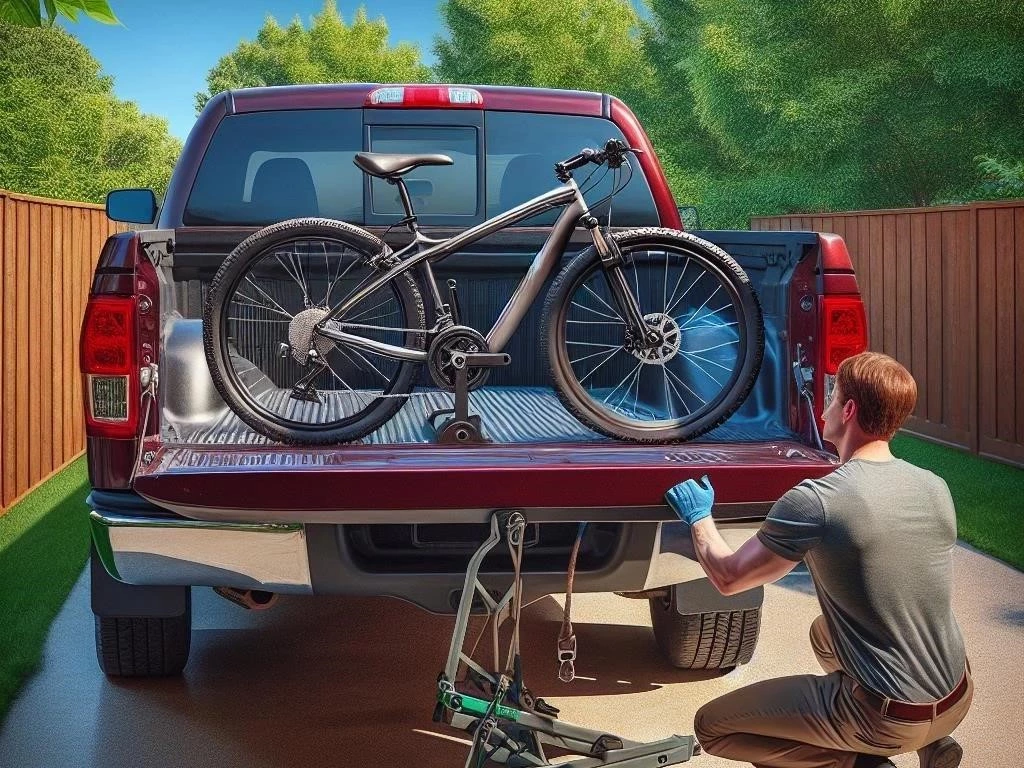
3.3 Truck Bed Covers and Their Benefits
Truck bed covers provide numerous benefits when transporting bicycles, enhancing safety and convenience. Firstly, they protect your bikes from harsh weather conditions, such as rain, snow, and UV rays, ensuring they remain in optimal condition during outdoor adventures. Additionally, a cover helps deter theft by concealing your bicycles from potential thieves. It also aids in maintaining a clean truck bed, preventing dirt and debris from accumulating on your bikes. Moreover, truck bed covers can improve aerodynamics, potentially enhancing fuel efficiency during travel. Lastly, they create a more organized transport environment, allowing for better cargo management of your biking equipment and cycling gear, enhancing the overall transport experience.
Loading Your Bicycle into the Truck Bed
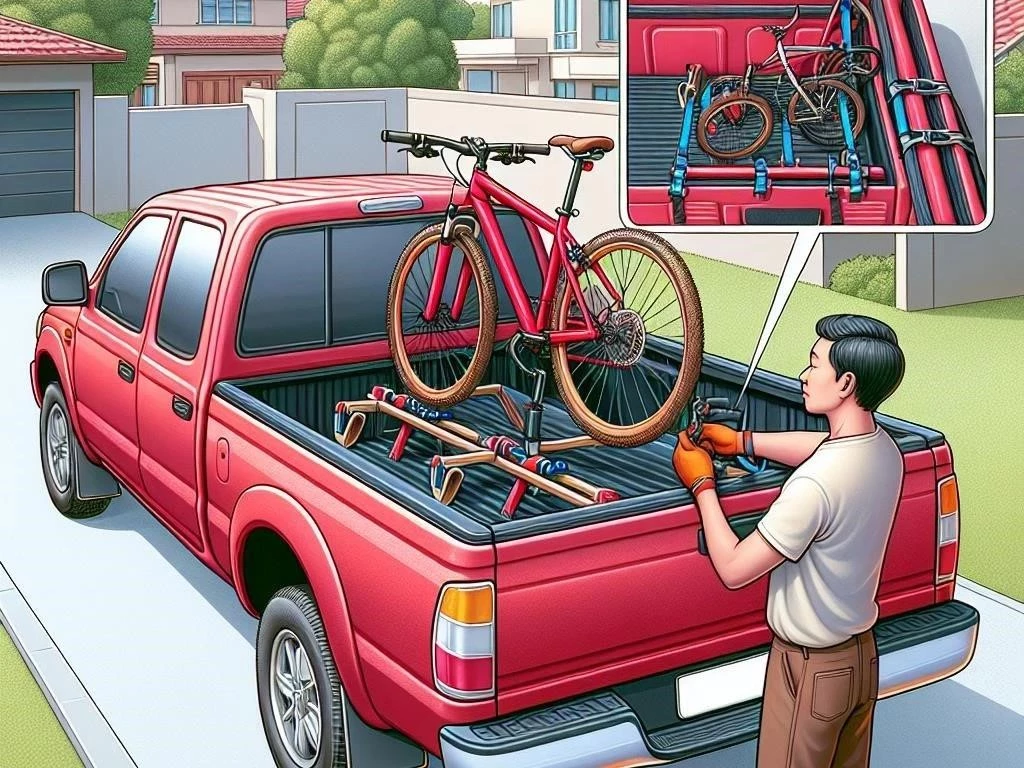
Loading your bicycle into the truck bed requires careful techniques, ensuring stability and safety. Follow best practices for successful bike loading and secure transport during travel.
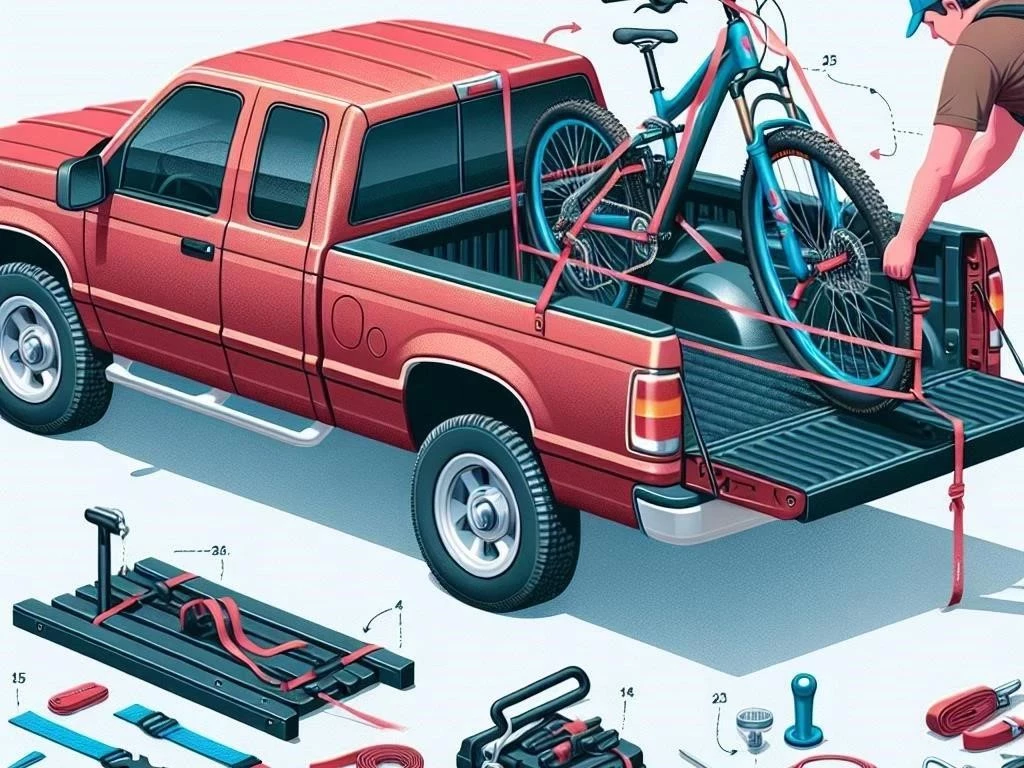
4.1 Best Practices for Bike Loading

Loading your bicycle into the truck bed requires careful attention to detail to ensure safety and stability. Begin by removing any loose accessories, such as water bottles or bags, to prevent damage during transport. Position the bike parallel to the truck bed, using a ramp if necessary for easier loading. Lift the bike by the frame, avoiding contact with the wheels to prevent misalignment. Secure the front wheel into a bike rack or against the truck wall to prevent it from rolling. Use tie-down straps to secure the bike, ensuring it is tightly fastened without damaging the frame. Finally, double-check your setup to confirm everything is stable and secure before hitting the road.
4.2 Techniques for Hauling Bicycles Safely
Hauling bicycles safely in a truck bed involves several techniques to ensure a secure and damage-free journey. First, always use a sturdy bike rack or straps to secure the bicycles firmly, preventing any movement during transport. Position the bikes upright to minimize the risk of falling or shifting. Additionally, consider using foam padding or blankets around sensitive areas to protect the frame and components from scratches and scuffs. When driving, avoid sudden stops or sharp turns, as these can cause the bikes to sway or shift. Regularly check the straps during breaks to ensure everything remains secure. Following these techniques will enhance safety and protect your bicycles during transportation.
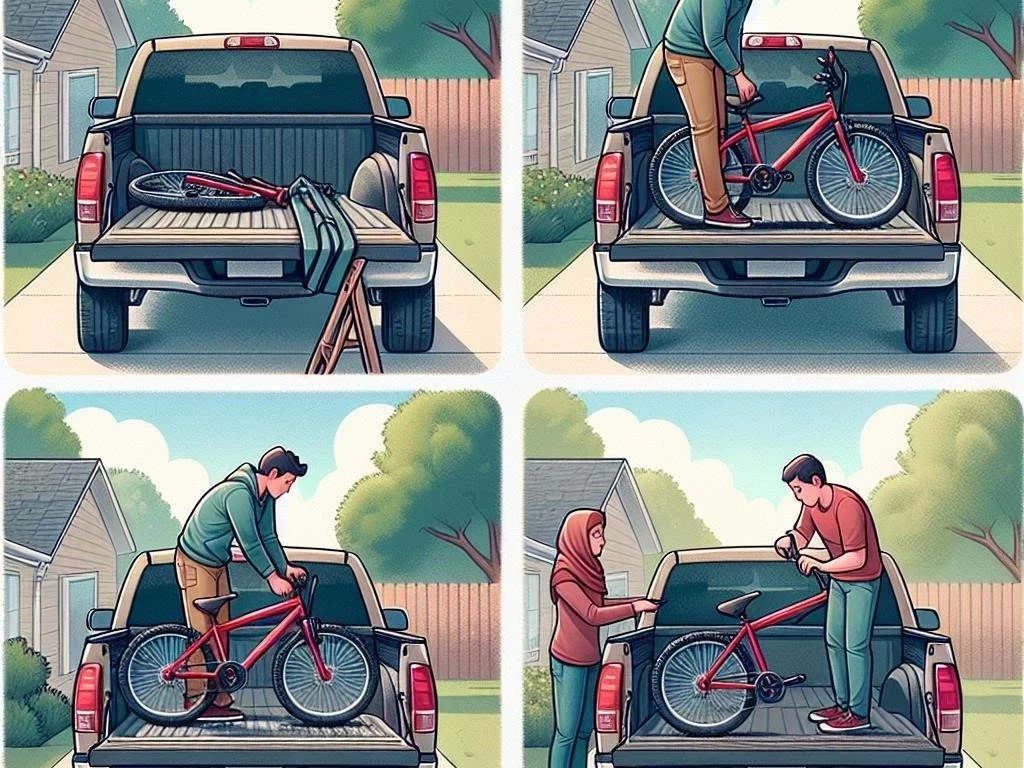
4.3 Positioning the Bike for Stability

Positioning the bike correctly in the truck bed is crucial for stability during transport. Start by placing the bicycle with the front wheel facing the cab of the truck to enhance balance. If using a bike rack, ensure the fork or rear wheel is securely attached to it, preventing any movement. When placing multiple bikes, arrange them in a staggered formation to minimize contact and maximize space. Use spacers or padding between bikes to reduce friction and protect the paint. Additionally, keep the center of gravity low by positioning heavier bikes or accessories toward the truck’s front. This method will help ensure a stable and secure ride while preventing potential damage to your bicycles.
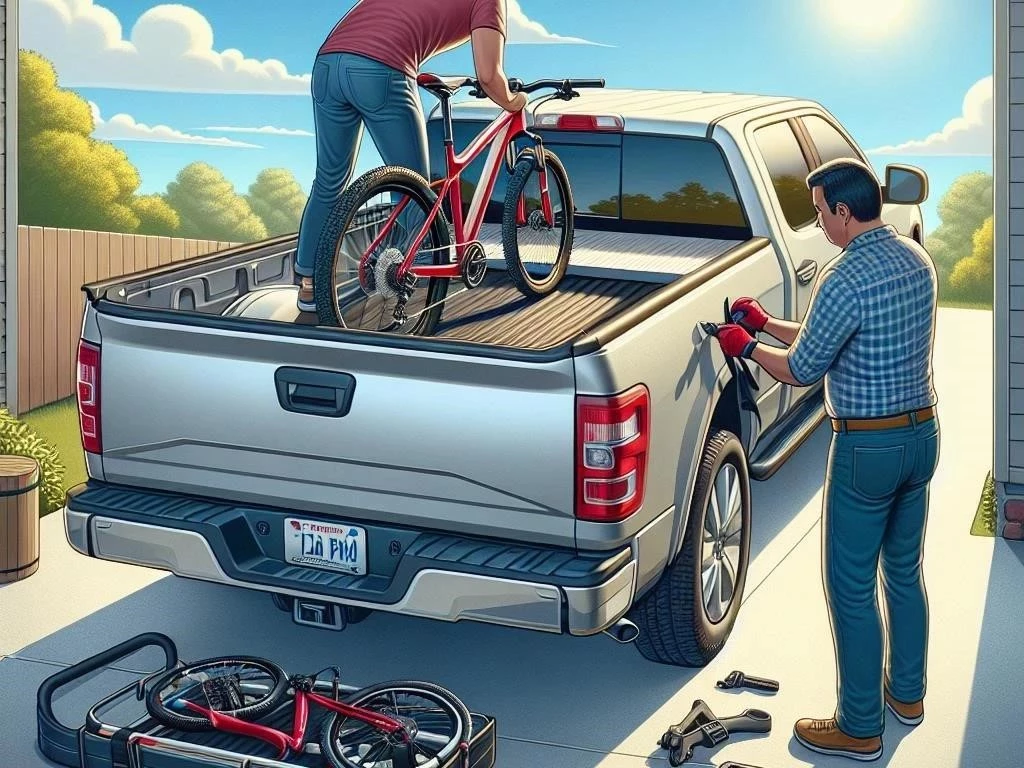
Securing Your Bike for Transport
Securing your bike for transport is essential for preventing damage and ensuring safety during travel. Use proper straps and techniques to achieve optimal bike protection.
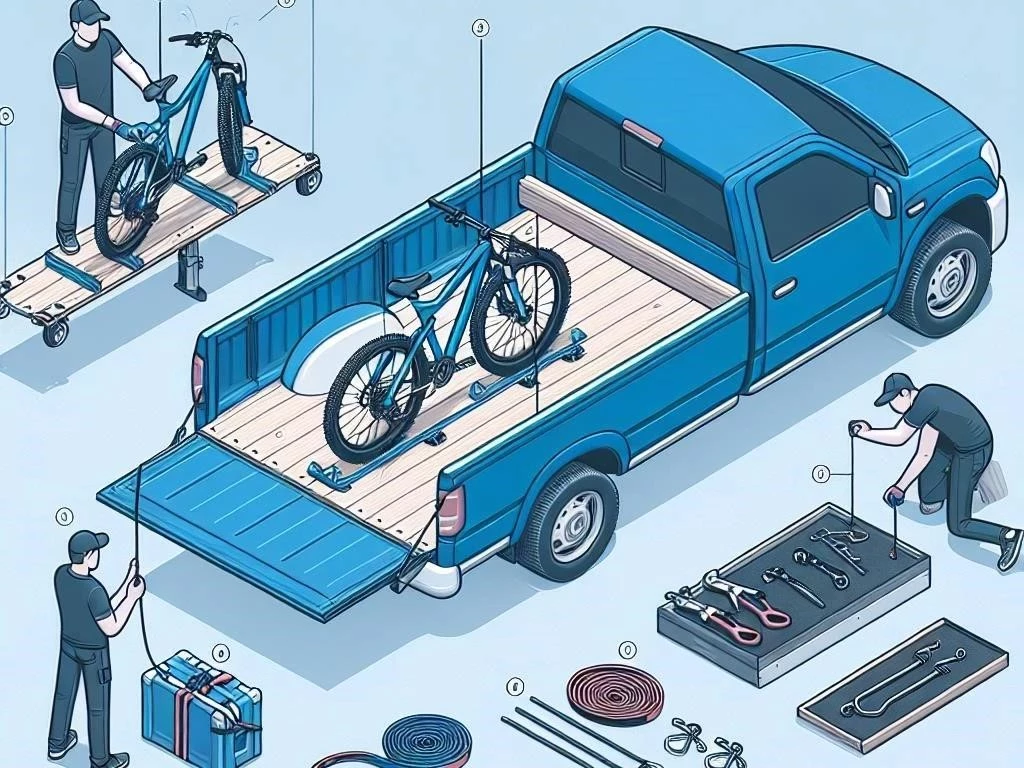
5.1 Using Straps and Tie-Downs
Using straps and tie-downs is crucial for securing your bicycle during transport in a truck bed. Start by selecting high-quality, durable straps or ratchet tie-downs designed for heavy loads. Attach one end of the strap to a fixed point on the truck bed, such as the anchor points or a bike rack. Secure the other end around the frame of the bicycle, ensuring it is snug but not overly tight to avoid damaging the bike. Use additional straps for the front and rear wheels to prevent any movement. Regularly check the straps during breaks to ensure they remain tight and secure throughout your journey, providing peace of mind for your outdoor adventures.
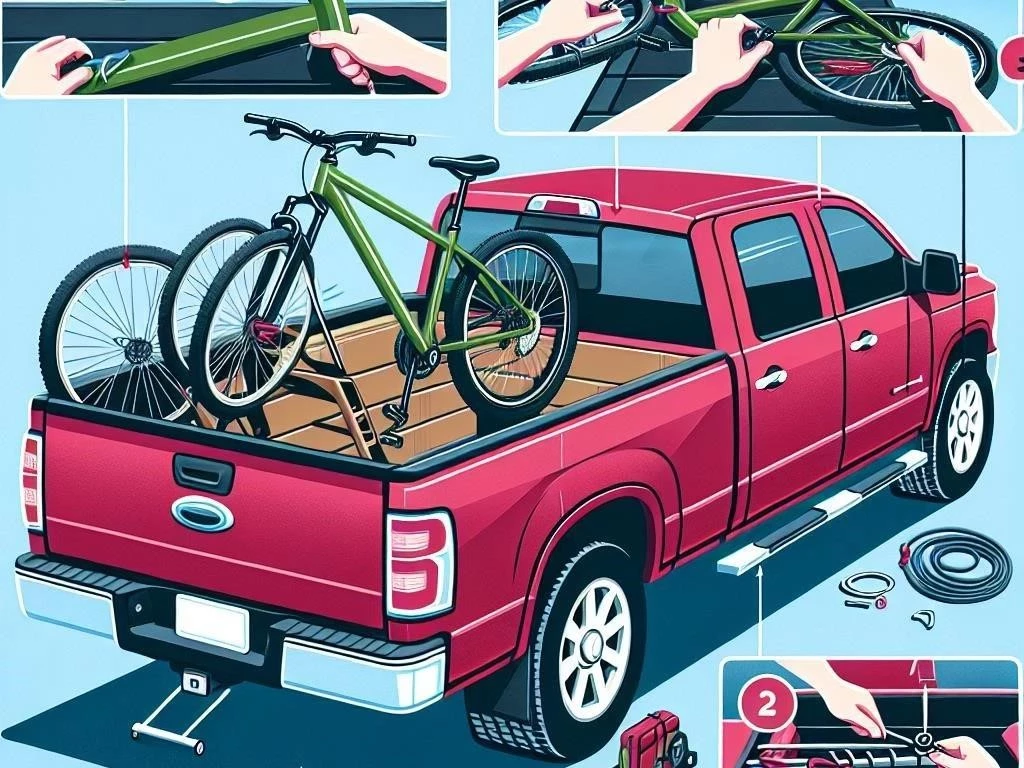
5.2 Ensuring Bike Protection During Transit
Ensuring bike protection during transit is essential to prevent damage while transporting your bicycle in a truck bed. Start by using protective padding, such as foam or soft blankets, to cover vulnerable areas like the frame, handlebars, and wheels. This padding will absorb shocks and reduce the risk of scratches or dents. Additionally, consider using frame covers or protective bags specifically designed for bike transport. Secure all loose components, such as pedals and accessories, to prevent them from shifting and causing damage. Finally, avoid stacking bikes directly on top of each other; instead, position them with adequate space between to minimize contact. These precautions will help maintain your bicycle’s integrity throughout the journey.
5.3 Checking for Secure Bike Placement
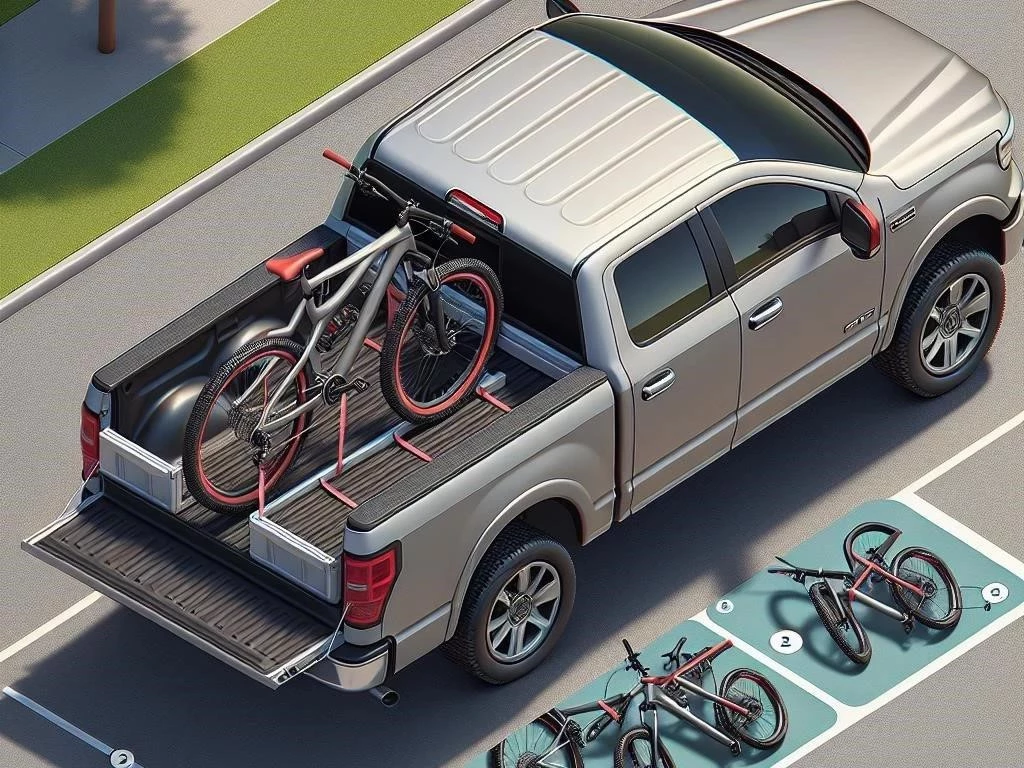
Checking for secure bike placement is a critical step before hitting the road with your bicycles in the truck bed. Start by visually inspecting the positioning of each bike, ensuring they are upright and tightly secured. Gently shake the bike to assess stability; there should be minimal movement. Verify that all straps and tie-downs are adjusted correctly, applying enough tension to hold the bike without causing damage. Additionally, check for any loose components or accessories that may shift during transport. If you’re hauling multiple bikes, ensure they are spaced adequately apart to avoid contact. Performing this thorough check will provide peace of mind, ensuring a safe, enjoyable journey for your outdoor adventures.
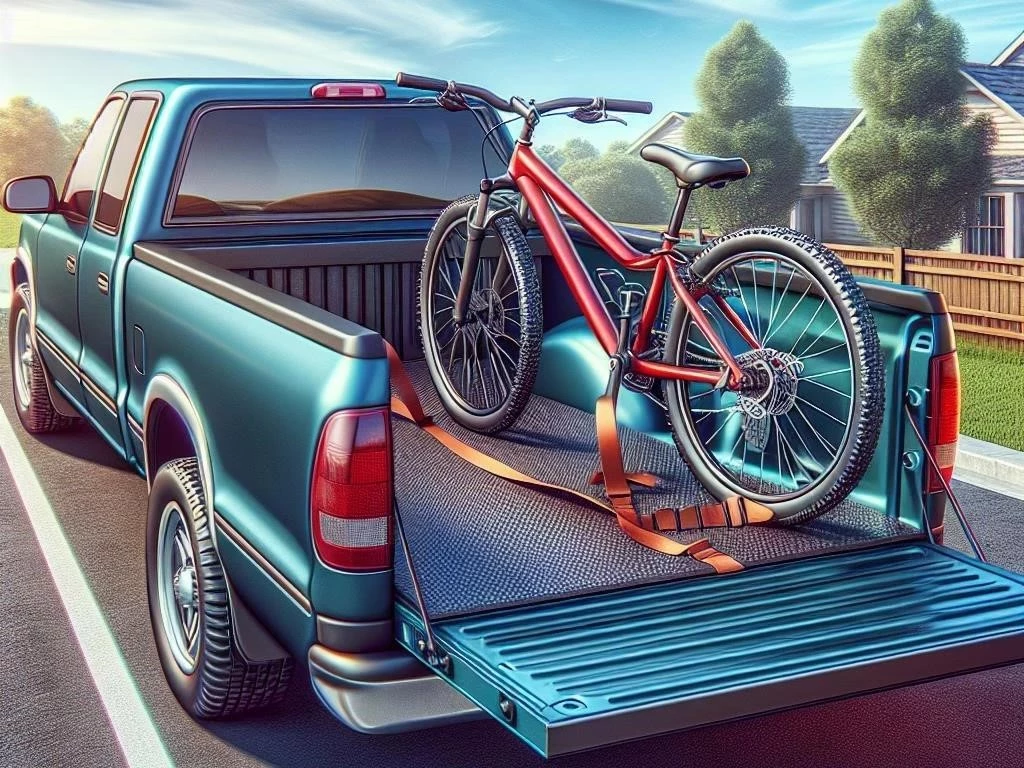
Transport Tips for Traveling with Bike
Implementing effective transport tips is vital for a smooth journey. Plan your route carefully, manage cycling gear effectively, and avoid common mistakes for successful travel.
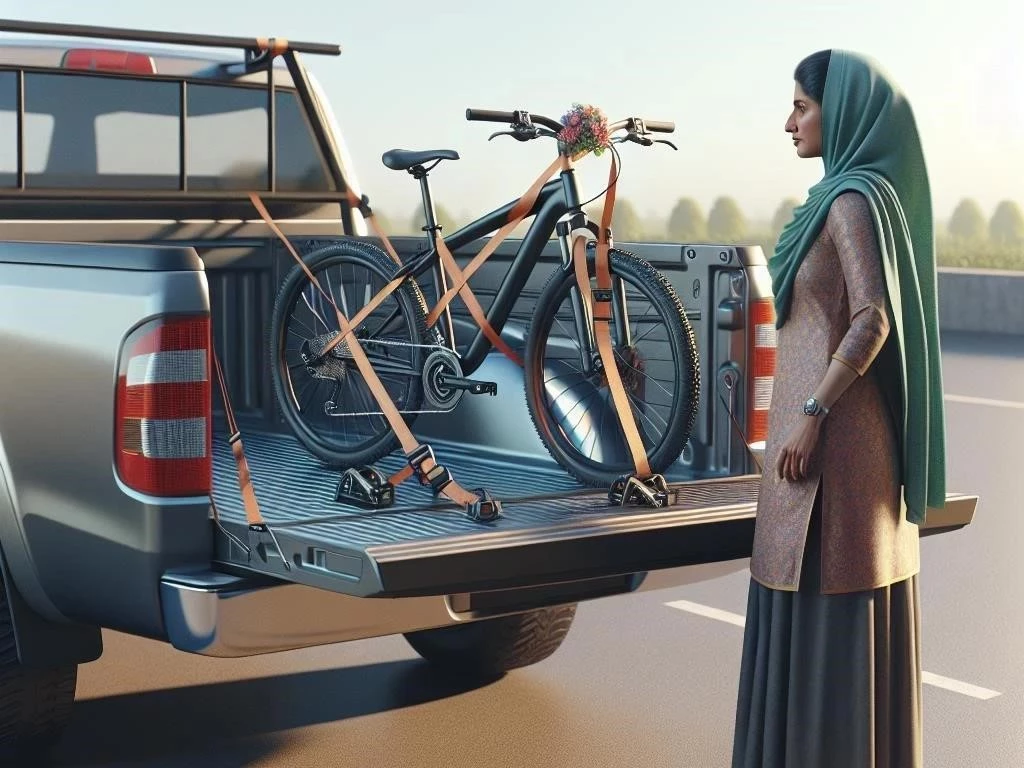
6.1 Planning Your Route for Outdoor Adventures
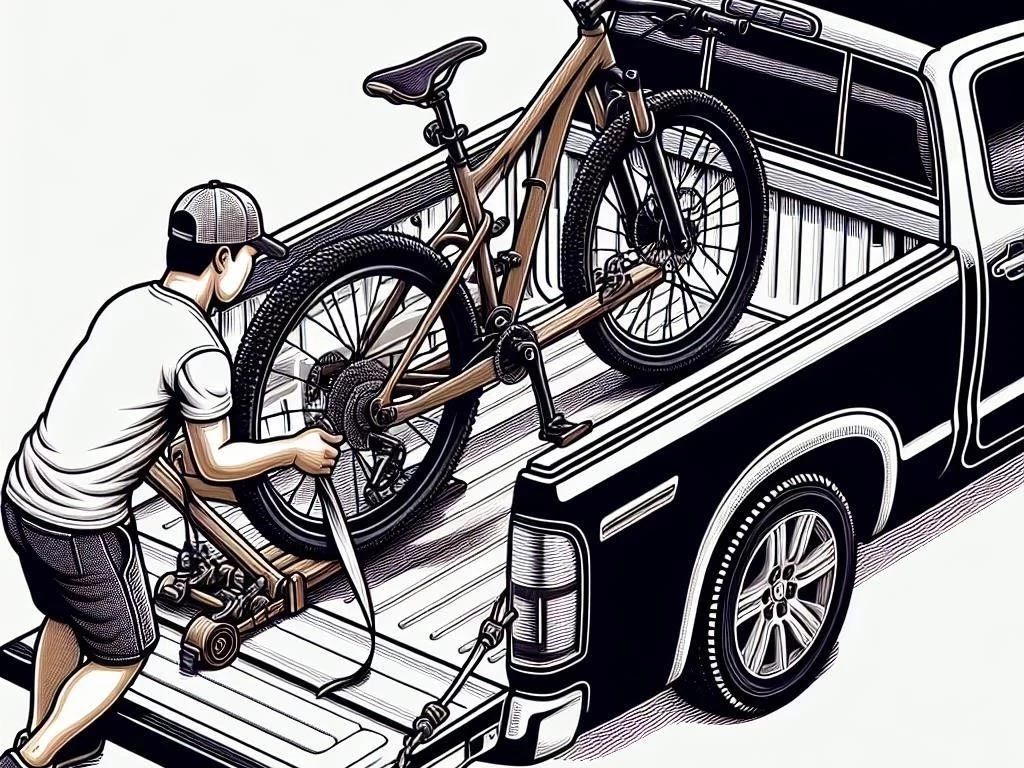
Planning your route for outdoor adventures is essential for a successful biking experience. Start by researching the best trails or cycling paths in your desired destination, taking into account the difficulty level and scenic views. Utilize mapping apps or websites that focus on biking routes to identify the safest and most enjoyable paths. Additionally, consider traffic conditions and potential road closures that could impact your journey. It’s wise to have alternative routes planned in case of unexpected detours. Moreover, plan for rest stops along the way, allowing time to stretch and hydrate. A well-planned route enhances your biking experience, ensuring a memorable and enjoyable outdoor adventure with your bicycle.
6.2 Managing Cycling Gear During Travel
Managing cycling gear during travel is crucial for efficiency and organization. Begin by categorizing your gear, separating essentials like helmets, gloves, and tools from clothing and snacks. Use designated storage bins or bags to keep items organized and easily accessible in the truck bed. Consider investing in a cargo management system that allows you to secure your gear while maximizing space. During breaks, ensure that you can quickly retrieve necessary items without rummaging through everything. Additionally, keep frequently used items, like water bottles and snacks, within easy reach. This organized approach not only improves your travel experience but also ensures that your cycling gear remains in excellent condition throughout your adventure.
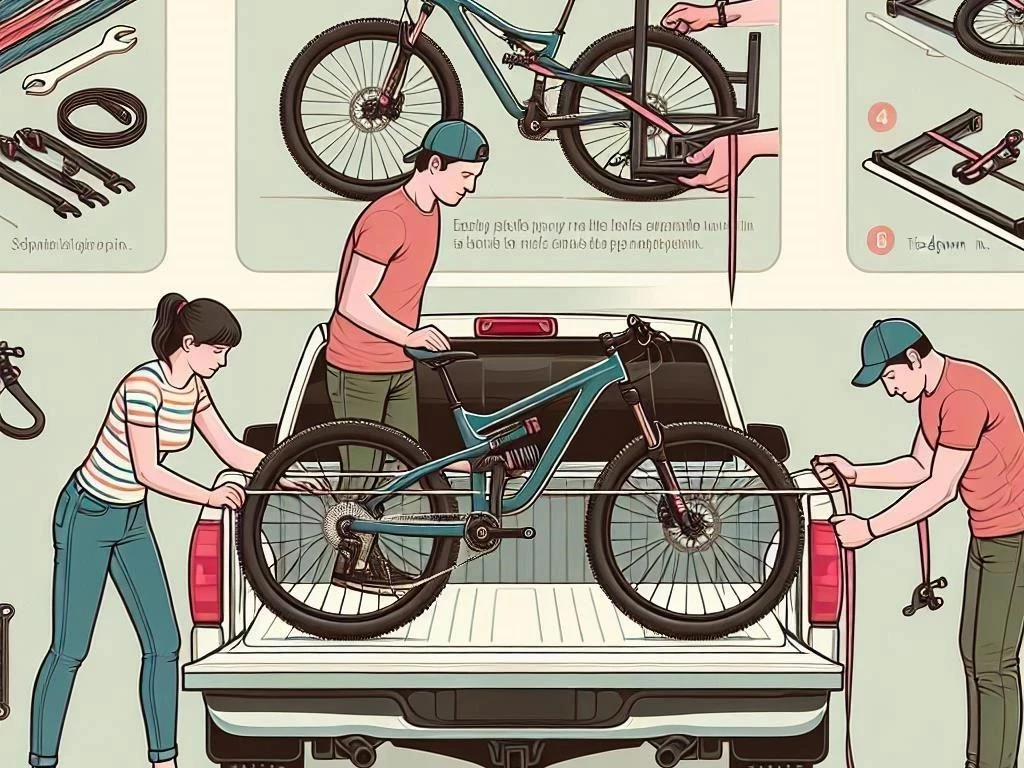
6.3 Avoiding Common Transport Mistakes
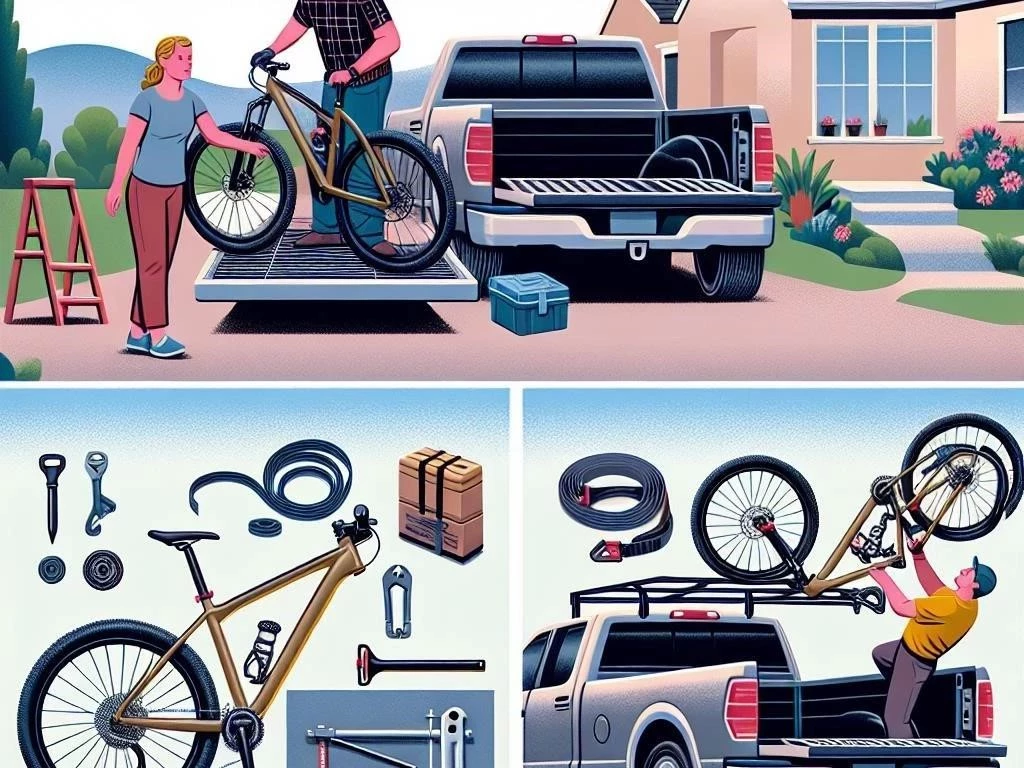
Avoiding common transport mistakes is essential for ensuring safe and effective bicycle transport. First, neglecting to secure the bikes properly can lead to damage during transit, so always use quality straps and check for stability. Additionally, failing to remove accessories, like water bottles or electronics, can result in unwanted damage or loss. Another mistake is not checking the weight limit of your truck bed; exceeding this can cause safety issues. Furthermore, overlooking the importance of protective padding can lead to scratches or dents on your bicycle. Lastly, remember to regularly inspect your setup during breaks to ensure everything remains secure. By avoiding these mistakes, you enhance your biking experience significantly;
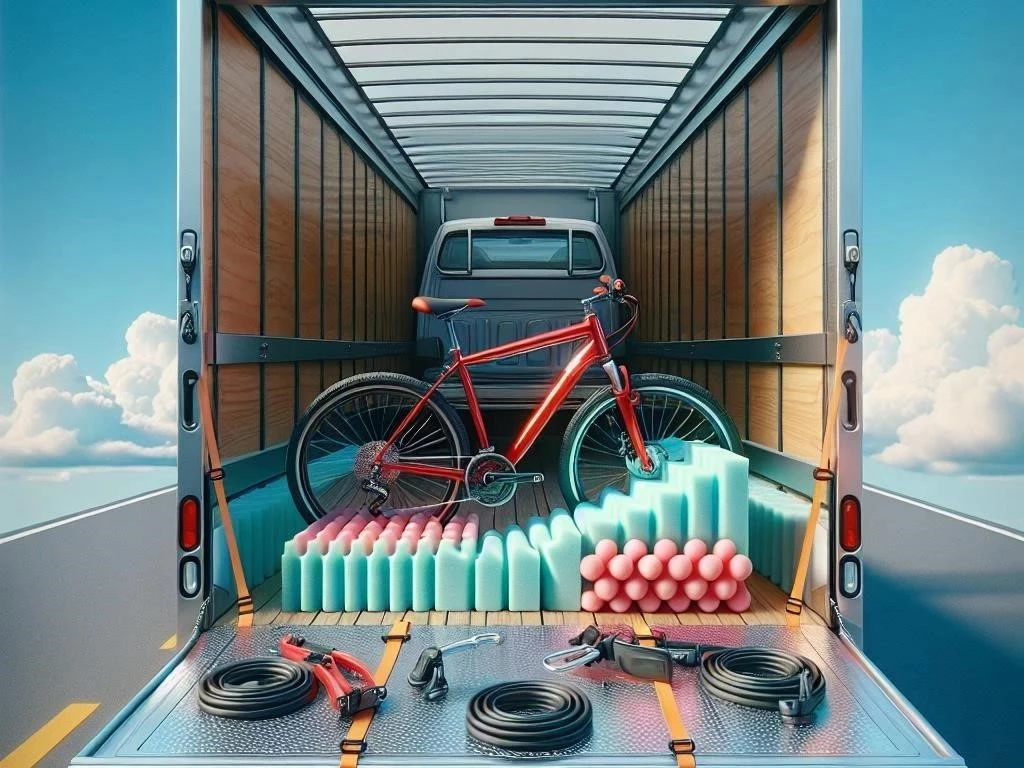
7.1 Recap of Key Points
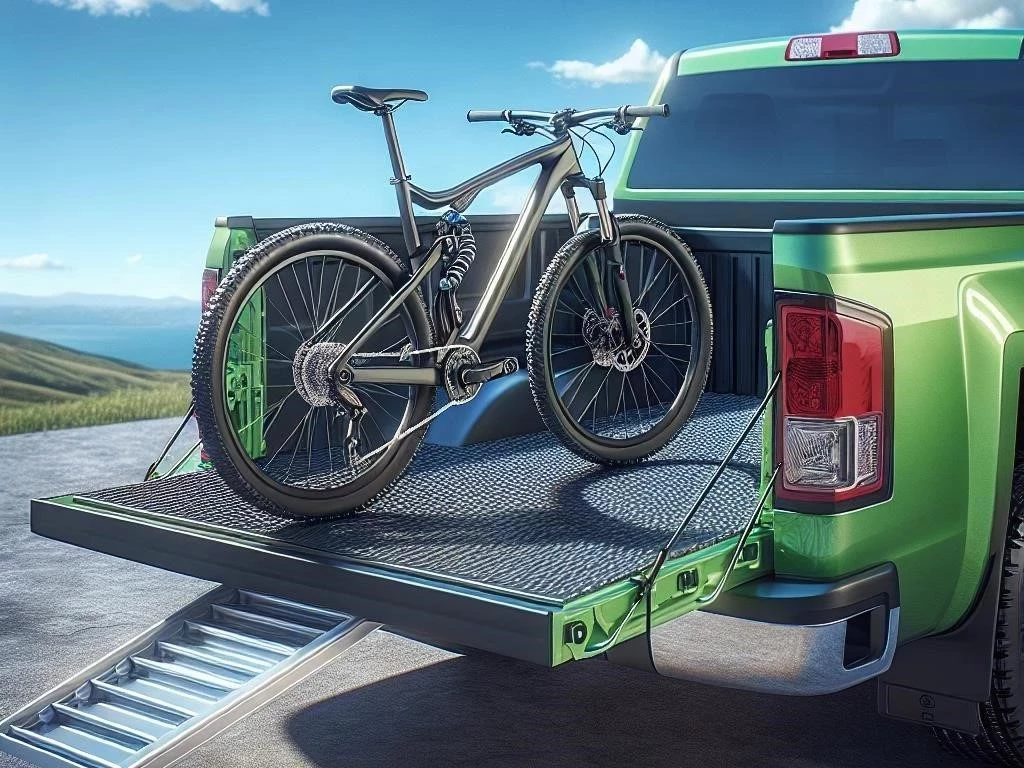
Recapping the key points for transporting your bicycle in a truck bed is essential for a successful journey. First, always prepare your bike by inspecting and cleaning it before loading. Choosing the right truck accessories, such as bike racks and cargo management solutions, will enhance security. When loading, practice proper techniques to ensure stability, positioning the bike securely in the bed. Use high-quality straps and tie-downs to secure your bike, ensuring its protection during transit. Additionally, plan your route and manage your cycling gear effectively. Finally, avoid common transport mistakes by double-checking everything before departure. Following these key points will lead to a safe and enjoyable biking adventure.
7.2 Encouragement for Safe and Enjoyable Cycling
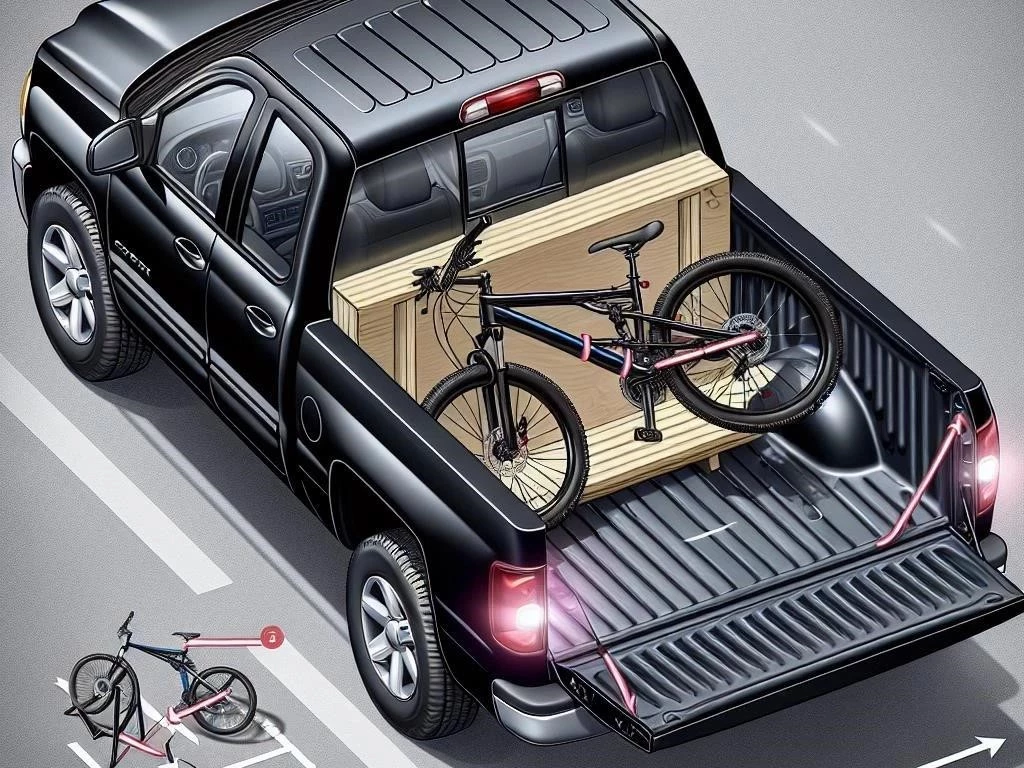
Encouragement for safe and enjoyable cycling is vital as you embark on your outdoor adventures. Remember that proper preparation and care during transport will enhance your overall biking experience. Embrace the thrill of cycling, knowing that your bicycle is securely loaded and protected. Take time to appreciate the scenery and enjoy the freedom that biking offers. Always prioritize safety by wearing appropriate gear and adhering to road rules. Additionally, be mindful of your surroundings while riding, ensuring a positive experience for yourself and others. With the right mindset and preparation, cycling can bring joy, fitness, and unforgettable memories. Enjoy every moment on your journeys, and happy biking!
